Photos: Durka Durka Photo
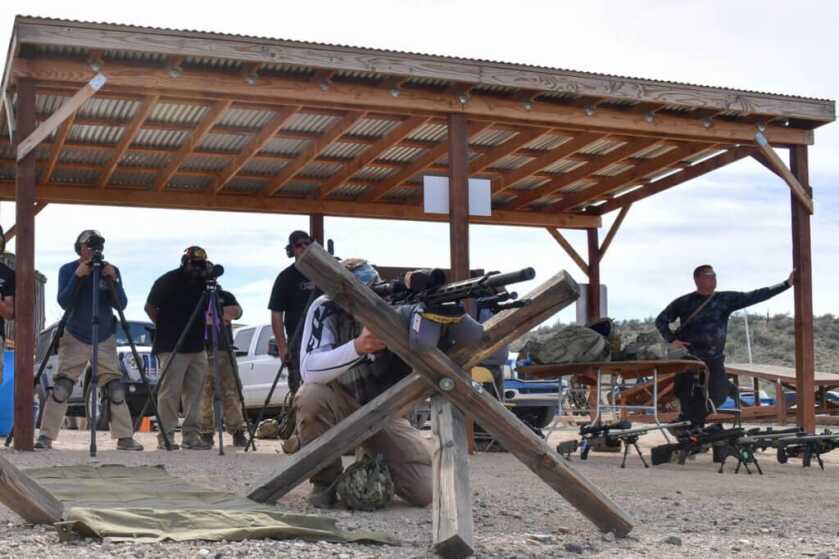
PRS stands for the Precision Rifle Series, a sanctioning body for competitive shooting. NRL, the National Rifle League does the same thing, though PRS is the common catch-all term for long-range precision “sniper” style matches.
PRS shooting has been one of the fastest-growing gun games in recent years. My background is in USPSA, Steel and Multi-Gun competition, but a little over a year ago I decided to try PRS. There are many ‘Intro to PRS’ style articles on the interwebs, but in general, they all rehash what equipment to buy and use. I read many of them before my first match.
The articles left me wanting as a new PRS shooter. I had a lot of unanswered questions and had heard a lot of rumors. So I decided to write the story I wanted to read before my first match.
Equipment: Get a rifle that shoots 1 MOA or better at 100 yards in the caliber of your choice. Get a scope with vertical subtensions in the reticle so you can hold over instead of dialing. For more info on rifle and glass selection see one of the many other articles.
Do I need to carry all of my equipment and ammo on me between stages?
No, while many shooters do carry what they need in a medium backpack, it is not required. This is a sport, not a drill weekend. You are free to use a wagon, 3 gun cart, or anything you want to carry all your junk.

Do I need to dress like a real sniper or look like I bought the entire 5.11 catalog?
Absolutely not. You will see many people wearing 5.11 and other tactical clothing and dudes that look like they are LARPing. You will also see people in regular street clothes, jeans, polos, shorts, etc. If the LARPing guys are on one end of the spectrum, I am on the other. I’m the clown shooting in shorts and flip flops — year-round. You could probably even wear a banana hammock if you really wanted to, but you will certainly get some strange looks at the range.

Are the stages timed, like USPSA?
Generally no. A typical match may have one stage that is on the clock to break any ties in the match. The rest are par time or max time. Usually 90-120 seconds. If you finish early, there are no bonus points. If you do not fire all rounds for the stage there is no penalty; you just miss out on the points more hits would have given you.
How much support equipment can I use on a stage?
Typically as much as you want. You can use a front bag, a rear bag, an arm bag, and a tripod all at the same time. But remember, all of these items will need to be deployed or setup on the clock reducing your time to actually shoot. Some stages do limit equipment but any limitations will be listed in the stage description.
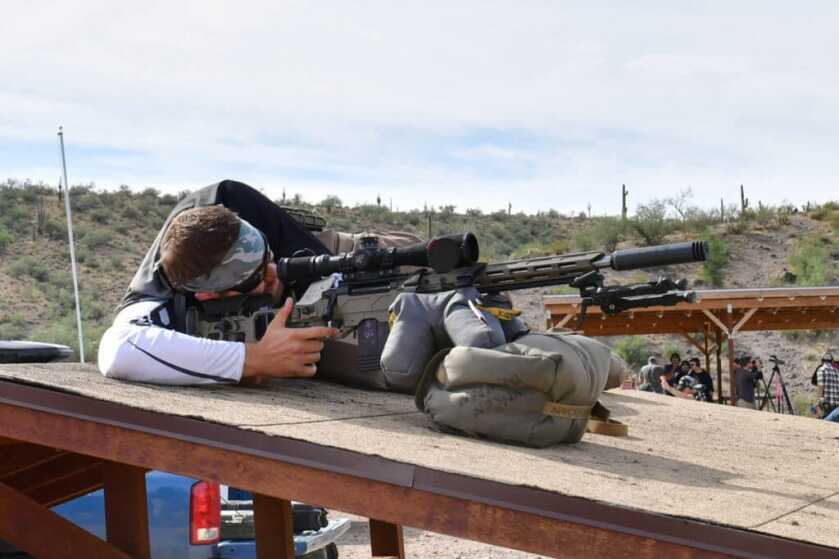
What if I miss a target? Can I shoot at it again? Can I load up my 25 round Pmag?
Generally no. PRS matches are about precision so you usually get 1 shot per target. In USPSA it would be considered Virginia Count. Round counts are limited on each stage, usually 10 or 12 rounds. Some stages, often with a KYL (Know Your Limits) rack you have to hit before moving to the next target.
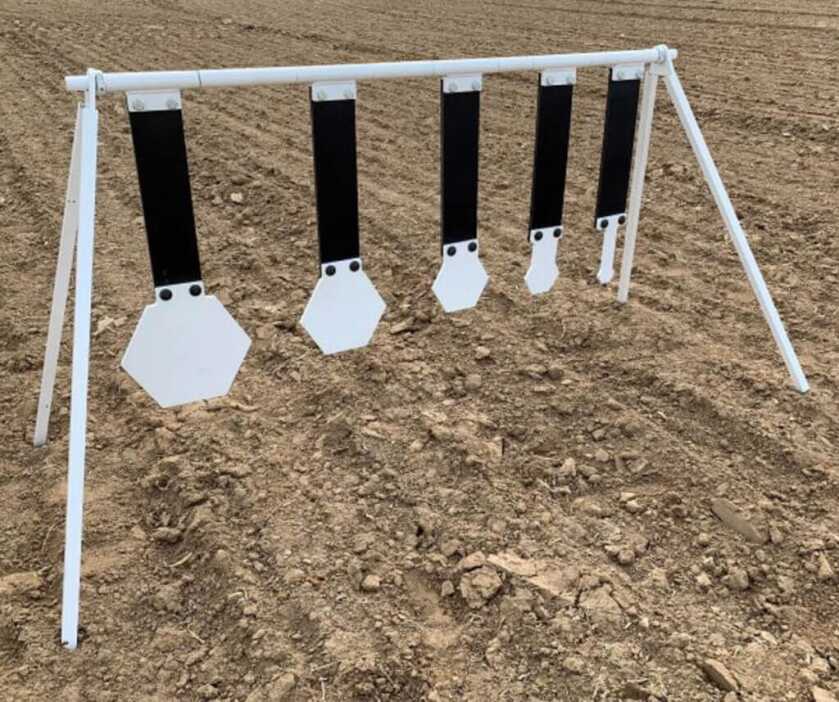
How much ammo do I need?
Here in Arizona our club matches usually have 60-80 targets at a match, so I bring 100 rounds. If you are unsure of the round count, email the club or match director ahead of time.
I don’t have a range finder or a Kestrel? Is it even worth showing up?
Yes, yes 1000 times yes. If you have those items, bring them. If you don’t have them someone on your squad will and you can get the Density Altitude (DA) from them. The stage descriptions will also usually tell you the distance to each target. If not, someone on your squad will have a range finder and tell you.

Do I need all those specialty bags?
If you have bags, by all means, bring them. But as a new shooter, you won’t need them. PRS shooters are a friendly bunch and always help out new shooters. In PRS you can spend almost as much money on bags as you did on your rifle and glass. Try before you buy. When on a stage, ask the veteran shooters what bag they are using for the various positions and then ask to try it. Try different bags, do this for a few matches until you find a couple of bags you like. If you are a baller, you can just buy the “bag of the week” and have a ton a gear you don’t use a couple of months later.
I’m really good at shooting prone, will the match still be challenging?
Hell yes, it will. In a club match, you will typically only shoot prone on 20-25% of the stages. Being able to shoot from really awkward positions is what wins PRS matches. Typical positions include: shooting off the hood, bumpers, and roof of a car, a simulated house rooftop (front and back), multiple rungs of a cattle gate, on top of a pile of tires, a basket of pool noodles, multiple rungs of a ladder, the back or seat of a cheap folding chair, cinder blocks, 5/10/55 gallon buckets, a rope or chain hanging perpendicular to the axis of the rifle, a barricade with multiple ports or steps or unsupported standing, sitting or prone.

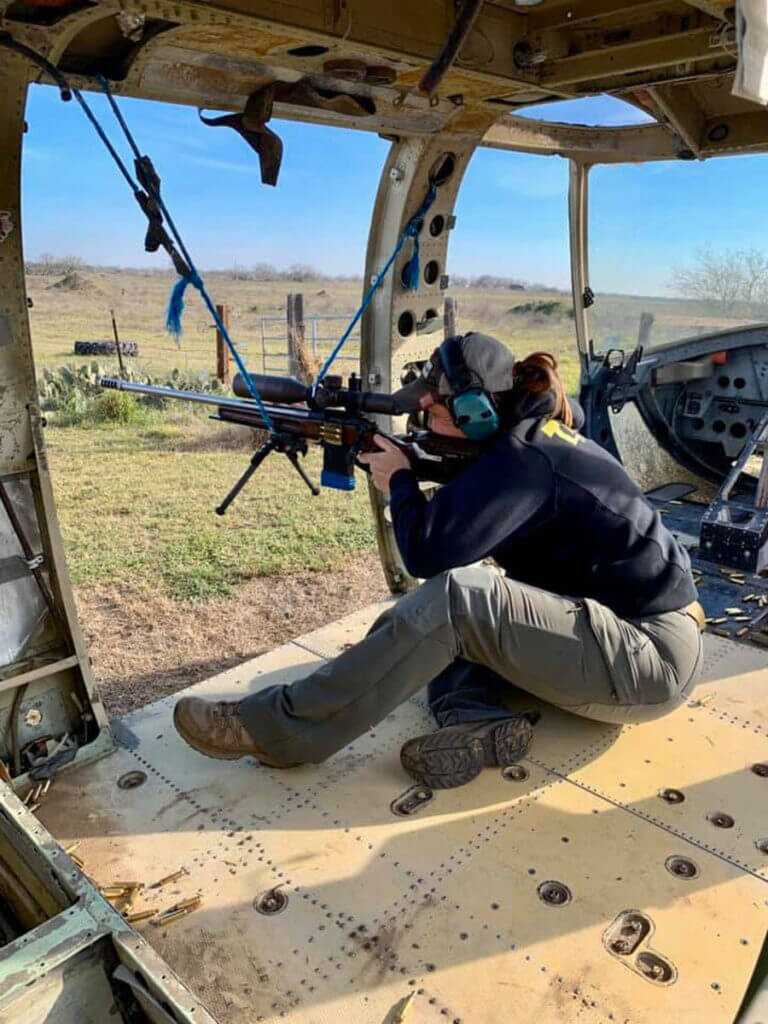
It pays to be creative in PRS. As seen in the photos below, there are many ways to shoot from the downside of a rooftop.
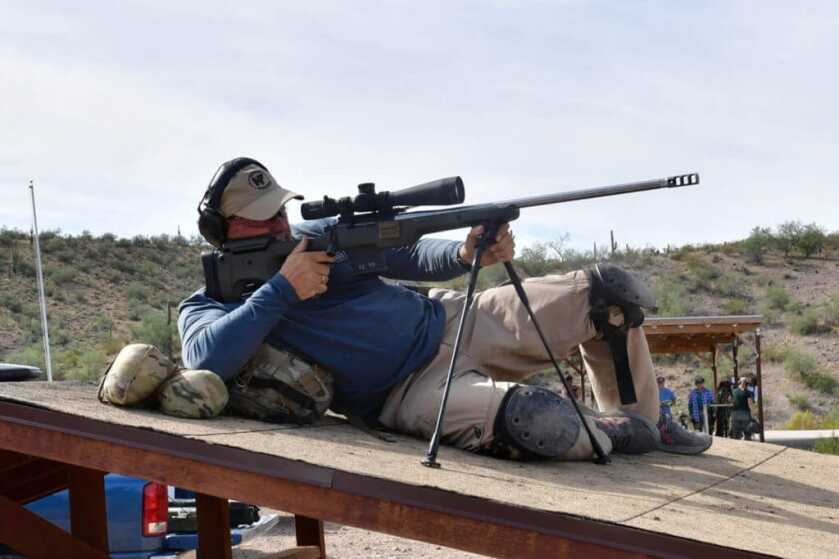

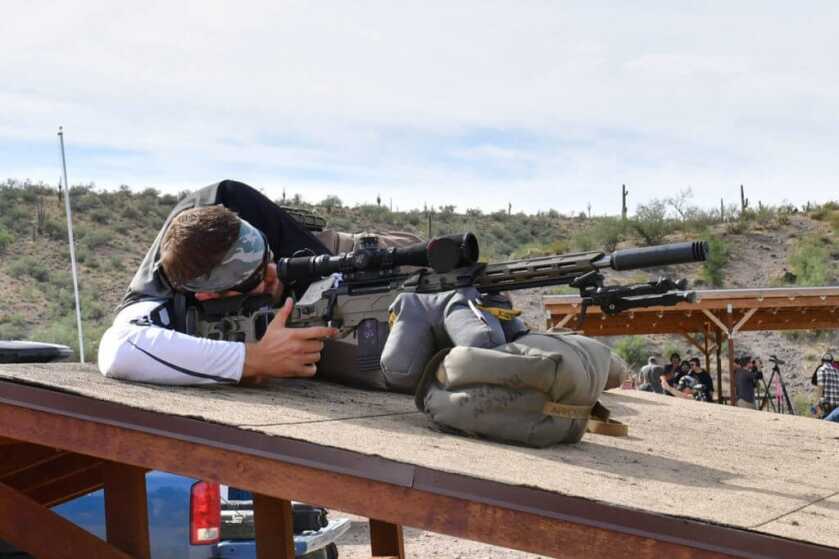

If you are shy you should wear your high waisted yoga pants. Plumbers crack is a common sight at a PRS match given the odd positions you have to shoot from.
PRS is hard. It will take you out of your comfort zone; it will challenge your skillset and it will make you a better shooter in time. For example, one of my local Multi-Gun clubs often has a stage where you shoot out of a helicopter shell (we have two at the club) at a steel USPSA B/C zone target at 300-350 yards. You usually shoot out of a window or door; it’s small and cramped inside and it makes for an awkward shooting position. I used to find this shot difficult; now it’s routine and fairly easy. I am now used to finding stability inside da choppa and PRS also taught me to simplify the dope. I know my 223 Multi-Gun ammo drops about 14 inches at 300 yards and a B/C zone target is about 24 inches tall. Instead of dialing or using a 1.3 MIL hold in the reticle, I put my crosshair just over the top of the head and that gets me a center hit.
How big or small are the targets?
1-3 MOA sized targets are common. A 2 MOA target would be a 2 inch at 100 yards, a 4 inch at 200 yards, a 10 inch at 500 yards, etc. The size often depends on the difficulty of the shot. Harder shots have bigger targets. In some cases, you will have sub MOA targets, like 3-inch steel on a KYL rack at 500 yards. Benchrest and F-class guys might think we are shooting at trash can lids but positions make up the difference in difficulty.
Match Directors want new people to come out and have fun. They want you to get hits, but they also want stages that separate the top shooters. Getting hits is fun, and hitting 3 out of 75 available targets will not bring new people back, and the good MD’s know this. A typical good 8 stage club match has 2 or 3 easier stages for the new guys, 3 or 4 harder stages for the mid-pack guys, and 2 or 3 hard stages for the top guns in the club.
Don’t expect to get 40 or 50 hits on 80 targets your first few matches. I am not good at PRS shooting but I have shot 5 matches and a ton of NRL22 (more on this below) and I am somewhere above the new guys and below the mid packers, or at the bottom end of average. I now usually get 40-50% of the hits available.
Now that you have all the basic information how do you prepare for your first or even fifth match?
If you have a good 22LR rifle and glass you can shoot NRL 22. It is put on by the NRL, and it is basically a mini PRS match, but with 22s inside 100 yards. The positions and props used are very similar or even the same, and the target sizes are comparable. A 22LR at 300 yards is comparable to a .308 at 1000 yards for wind effect and bullet drop. It’s why 22s are such great training rifles.
But don’t just rely on 22 matches. Grab your centerfire rifle and go practice. Bringing a cheap folding chair or a step ladder can help your practice sessions immensely. Shoot off the various steps of the ladder. Shoot off the back and seat of the chair, turn the chair 90 degrees and do it again. Try it kneeling, both left and right knee down and both knees down. Do it bent over, prone, sitting and anything else you can think of. If you only have a 100-yard range and no steel, draw circles or use stickers that are 1-3 inches in diameter on a paper target.
Know your DOPE! DOPE stands for Data On Previous Engagements. In the olden days, shooters would record their holdovers or bullet drop at various distances and weather conditions in a notebook. They could later refer to the notebook to know how much drop or hold was needed for a particular target. It was a lot of work and not always precise.
With today’s technology, it is far simpler. You don’t need to be a mathlete with expert level slide-rule-fu to figure out your hold for any situation in any location on Earth in any weather. You may face targets from 50 to over 1000 yards at a club match and you need to know how much hold or drop you will need for each target, and that means doing your homework.
The first thing to do is shoot your ammo with a chronograph, a Chrono measures the speed of your bullet. If you don’t have one get one; if you can’t get one, borrow one while at the range. If all else fails and you are using factory ammo go with the manufacture’s published velocity.
Step two is to get a ballistic app. There are many good ones for both android and iPhone for a small fee. Once you have the app, input all of your rifle data and be meticulous about it. Weigh multiple bullets to get an average weight. Use calipers to determine the distance from the center of your scope to the center of the bore and the length of your bullet. The more accurate your measurements, the more accurate your DOPE will be on the range.
After you have your app and all your data, zero your rifle at 100 yards. When zeroing, be sure to put in accurate weather data for the day and time you zeroed the rifle. Then using the information in your app, confirm the drop/hold 200 and 500 yards if you can. Make adjustments in the app if needed.
When you get to your first match, be sure to tell the squad mom that you are a new shooter. Watch the good shooters and see what gear they use and how they shoot a stage. Ask questions.
Regina Milkovich is a top PRS shooter. She is usually the top lady shooter at any given match but she has also won the overall at 2 major matches. At the recent Rifles Only Brawl, she finished in a 5-way tie for first overall. At any match, Regina is a threat to win the overall. She shared some advice for new shooters at a recent club match.
“Spend more money on ammo and practice than on gear. Shoot club matches, ask questions, but shut up once in a while. You will hear more information than you think. By being quiet you can hear wind calls and strategy from top shooters. Sometimes you don’t need to try and make friends with everybody and instead listen and pay attention.”
“Don’t ask questions on the internet. Every Joe Schmoe who sits at home answers; it’s much better to ask questions at an actual event. Even at a club match, you have the top dogs in your state or city at the match. They will be a lot more helpful than internet people.”
“Get a good pair of binoculars, so you can watch people shooting. Always try to squad with someone who is better than you. The PRS sport as a whole, we want to help, we want people to hit targets and ring steel.”
“Get an app that works. Geo Ballistics, Shooter, some people still use Strelok. Try the dope. Any app you use will only be as good as the data you put in it. If your velocity is off, or your sight height is off, your barrel twist, any of that stuff your shot will be off. Pull data from a local weather station if you don’t have a Kestral, and you don’t need the 5700 model, the lower models work fine for pulling environmentals.”
Regina also shared some gear recommendations.
“Have a rear bag and everything else you can borrow, or ask to try out and they will let you. With bags, you will end up buying everything and then end up selling 90% of it, at 60% of its value. Most of the other bags are special purpose bags. A pump pillow is great if you are tiny and need to fill gaps, or for a rooftop. Mostly we use them for one stage and carry them around all day, or sit on them while writing dope, or take a nap on it when stages run long. A good rear bag with the weight you like, with Git-Lite, standard pellets or sand.”
Regina’s husband Tim is also a top PRS shooter and he recommends jumping right into the deep end.
“Show up. Don’t procrastinate, don’t say I wish I could do that and never do it. You will kick yourself for not doing it. It’s a fun game regardless of how many targets you hit. Just get out there and start, and you will learn every time you shoot. I’ve been doing this for 10 years and I still learn things.”
Matt Kitzmiller is a top Multi-Gun shooter from AZ and he shared his thoughts after shooting his first PRS match.
“I wish I would have brought all my bipods and bags. I took my kneeling height bipod out of my bag that morning thinking there is no way I will need a bipod this tall. But on that reverse rooftop stage I 100% needed it. Just like in 3 Gun you can’t run around with your scope on max power without having issues finding targets. I should have stayed in the 15-20 range instead of 25 or more. I didn’t figure that out until the end of the match. I didn’t have trouble finding targets at 25 power until we got into the awkward positions; then I had a really hard time.”
Don’t wait, grab a rifle, a few boxes of ammo and head out to your first PRS match. You will learn, have fun and in time you will become a skilled precision long-range shooter — probably.

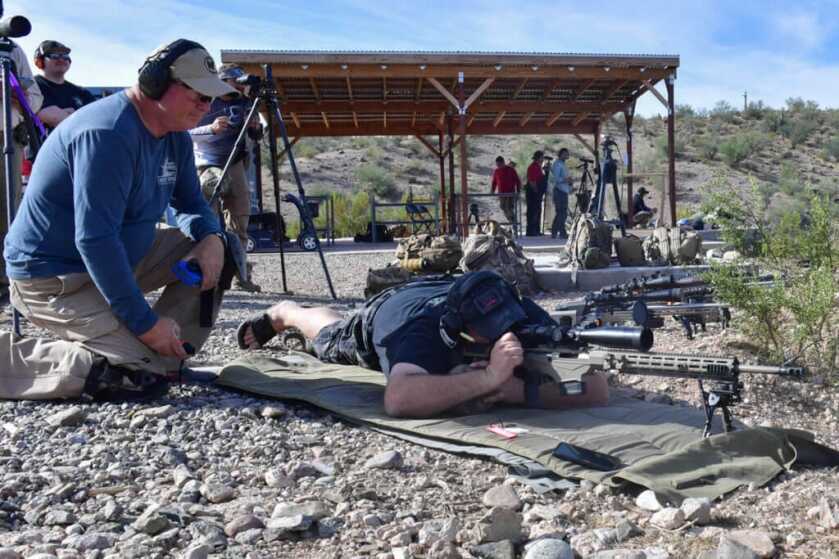
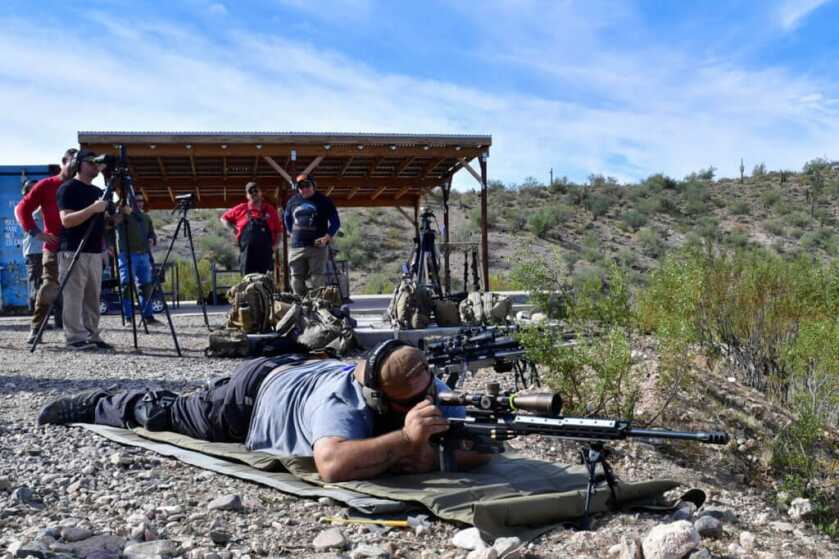
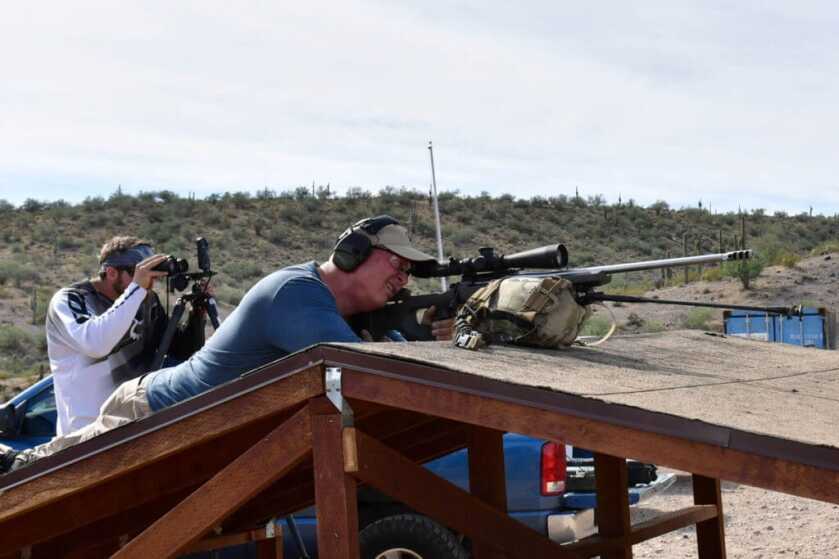
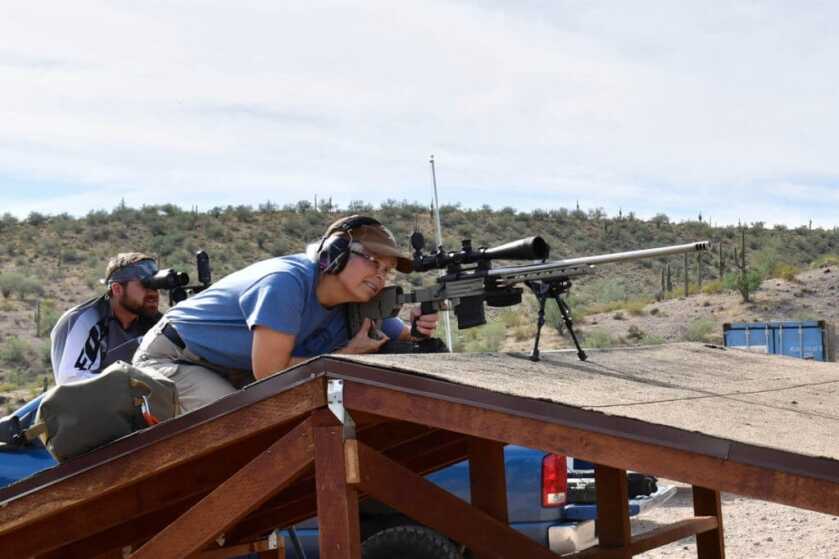
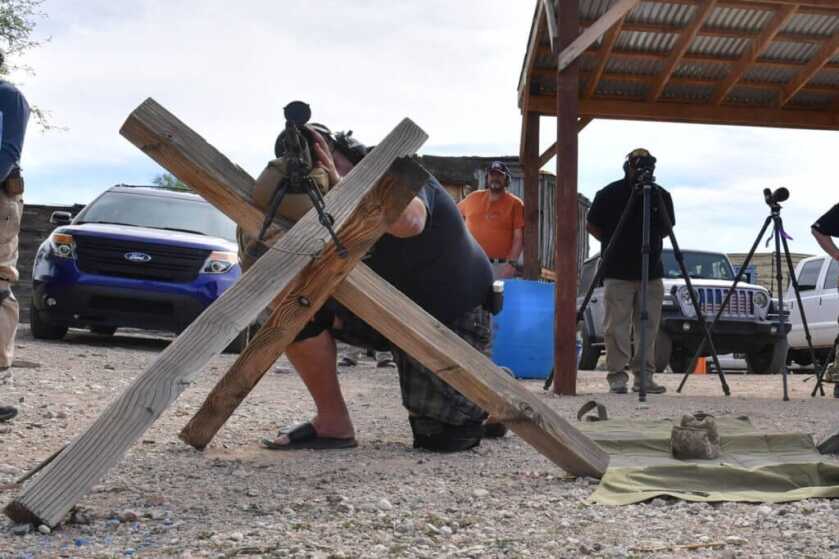
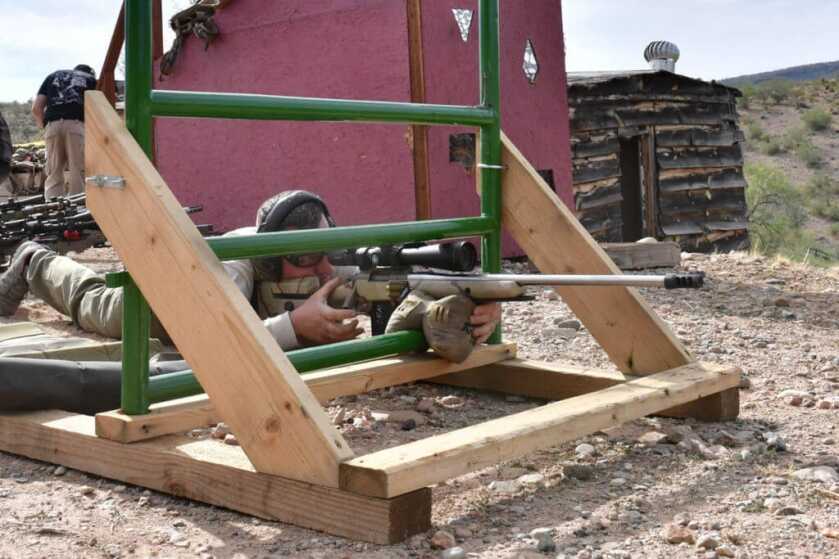


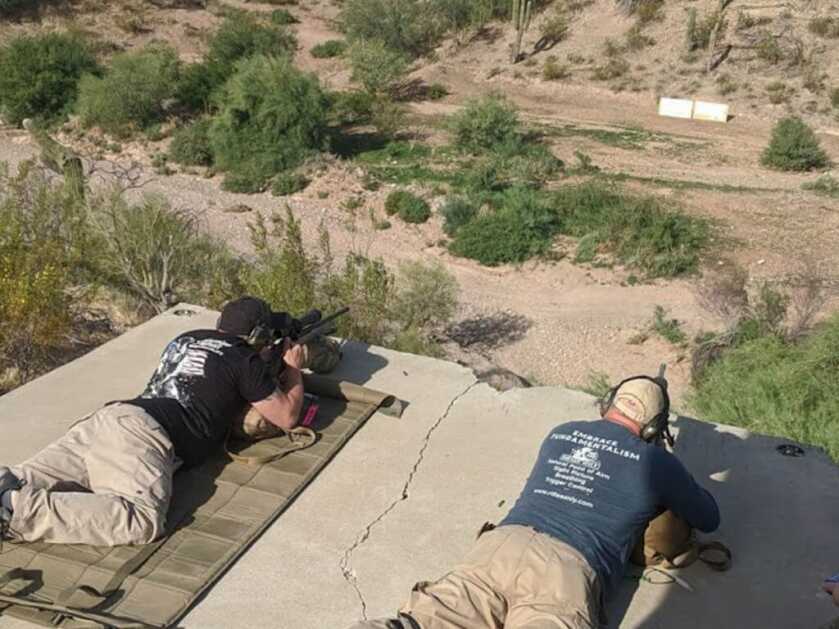
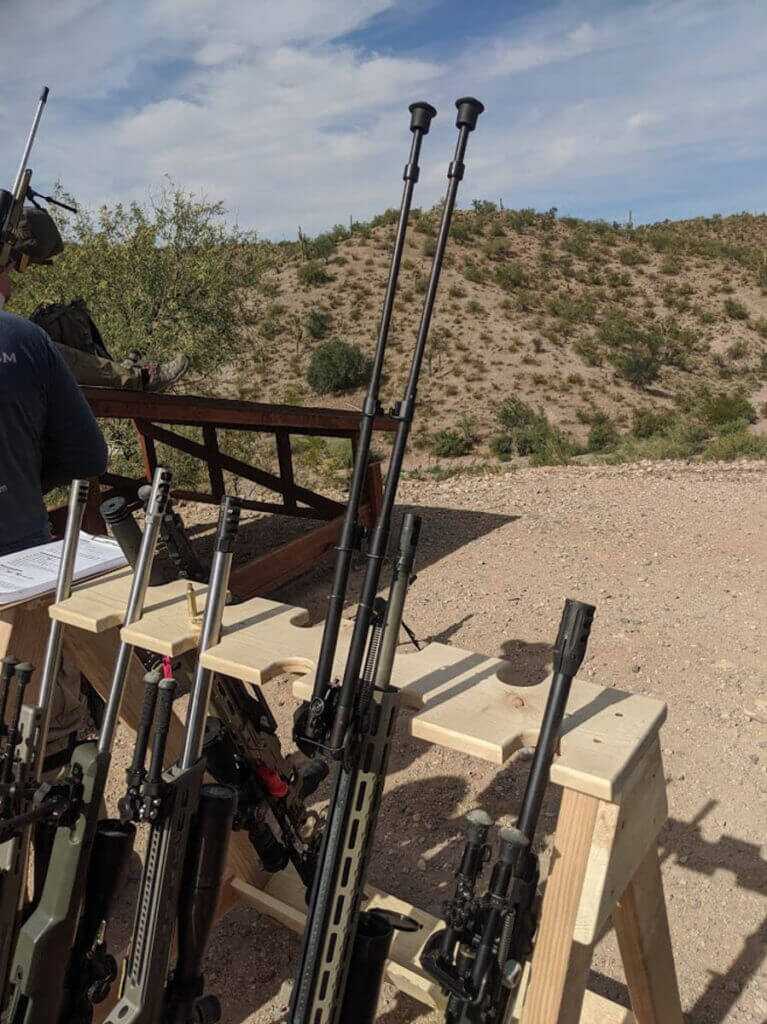
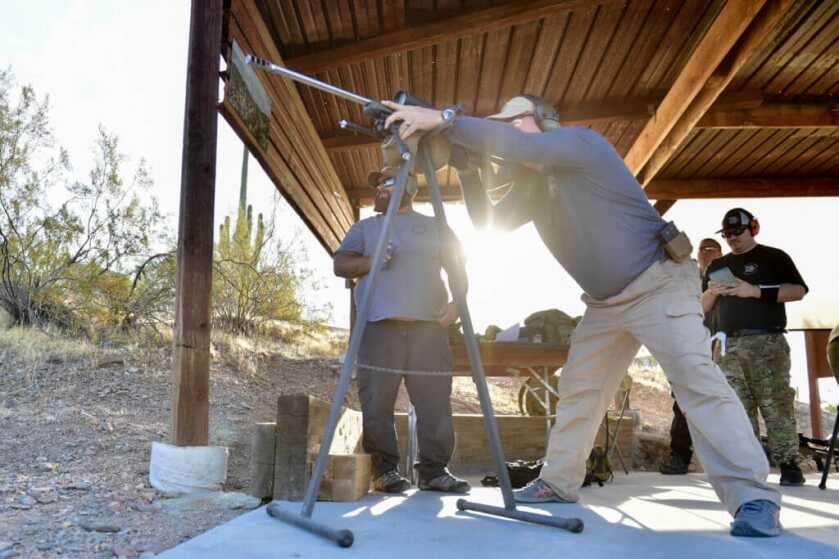
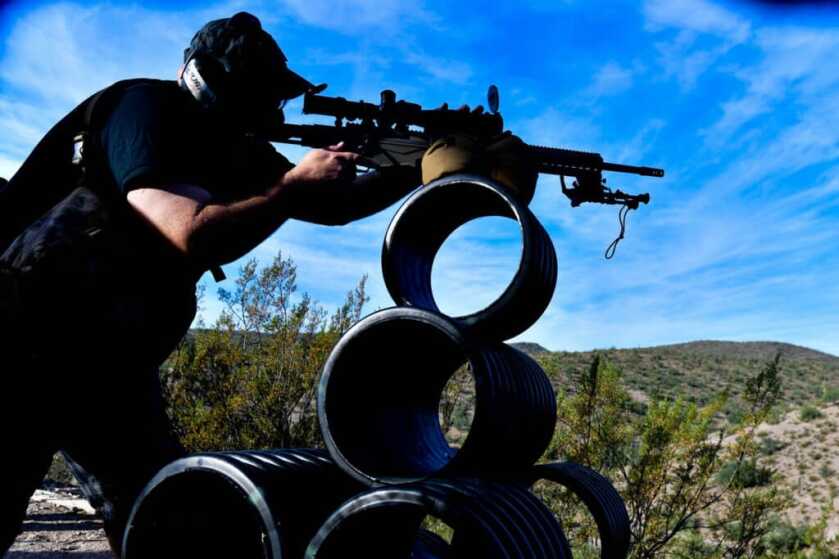
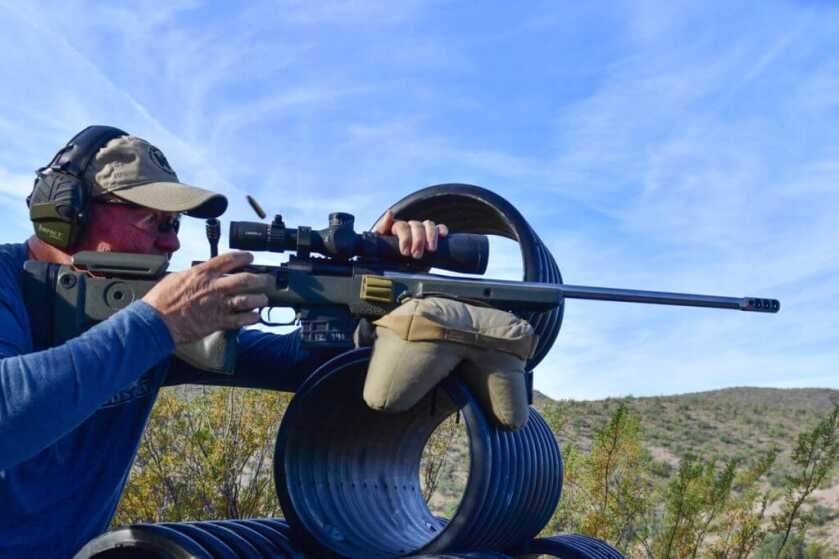

Is there a weight limit for your rifle? I’ve heard 18 pounds from somewhere.. Or is that F-class I’m thinking of?
Neither the PRS nor NRL series have a max weight on rifles.
How much should I expect to spend on an entry fee for a PRS or NRL match?
It varies depending on where you shoot. The AZ Long Range PRS club charges $40 for a club match which usually has 8 stages.
are any of these matches held in Texas
Yes. Google Precision Rifle Series and National Rifle League.